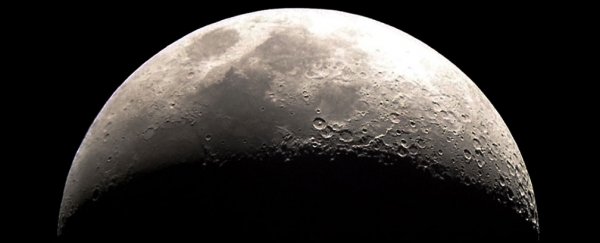You know the big problem with gigantic lunar craters, right? They're absolutely freezing! This not only makes them an inhospitable habitat for humans, but even robots designed specifically for a space environment can experience operational and maintenance problems if exposed to the shadowy cold of the Moon for too long.
But what if you could reflect sunlight directly into the heart of a lunar crater to generate a warm, well-lit environment that's better suited to the needs of robots and their kindly human overlords? That's the thinking behind NASA's audacious 'Trans-Formers for Lunar Extreme Environments' project - one of several new research projects the US space agency greenlit this week.
The project involves navigating a rover unit to the rim of a crater, where it will erect a 'TransFormer' mirror array to reflect sunlight into the darkened cavity below, with the goal of generating enough warmth and light in the area for experiments to be performed remotely by other robots down at the base.
According to Adrian Stoica of NASA's Jet Propulsion Laboratory, "The TransFormer (TF) concept is a paradigm shift to operating in Extreme Environments (EE). TFs are systems that direct energy into energy-depleted (extreme) environments, transforming them, locally, around robots or humans, into mild micro-environments."
The effect could be amplified by several TransFormer units working in unison, catching different angles of sunlight to provide "continuous collective illumination", he said.
The TransFormer plan is one of seven projects in NASA's Innovative Advanced Concepts (NIAC) program. The goal of the initiative, which awards as much as US$500,000 in funding over the course of a two-year research grant, is to nurture "visionary ideas that could transform future NASA missions with the creation of breakthroughs - radically better or entirely new aerospace concepts - while engaging America's innovators and entrepreneurs as partners in the journey".
In other words, it's NASA's version of the Google 'Moonshot' philosophy. Except literally, in some cases, and performed by the very people who invented Moonshots in the first place.
The other concepts that have made it through to Phase II of the NIAC program are no less adventurous. They include the Titan Submarine, designed to explore icy oceans on cold planets; Swarm Flyby Gravimetry, which pilots a fleet of small drones around asteroids and comets in order to map their gravitational fields; and the Heliopause Electrostatic Rapid Transit System (HERTS), a solar sail designed for speedy return trips to outer planets in our Solar System within one to two years of launch.
"This is an excellent group of NIAC studies," said NASA's Jason Derleth in a statement. "From seeing into cave formations on the Moon to a radically new kind of solar sail that uses solar wind instead of light, NIAC continues to push the bounds of current technology."
